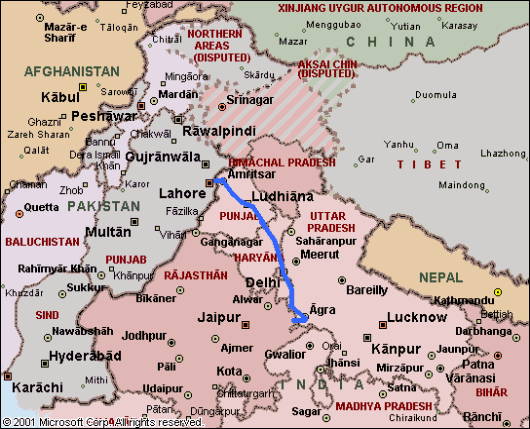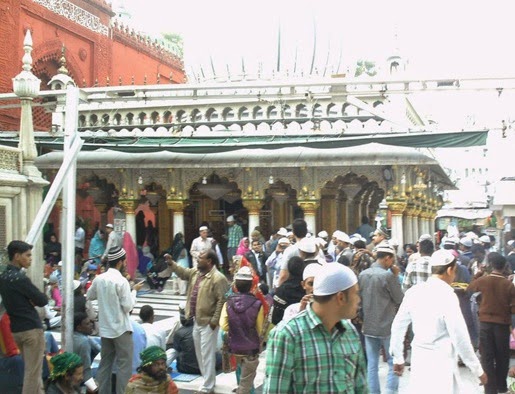
Greetings!
This week’s post describes one of the most awful rail journeys of my life. Three hours spent in the end vestibule of a carriage with fifteen other people. That’s 21st century Indian 3rd class for you! It’s certainly a far cry from the trains of many countries today, including my own, although in our quest for safety I do believe that we have lost one of the greatest pleasures of rail travel: the window that opens.
Today however, I was granted a reminder that we haven’t always been so “civilised”. I had the immense pleasure to travel on the Knotty Heritage Train at the Foxfield Light Railway, a train made up of Third Class carriages from the 1870s lovingly restored by the railway. They’ve done a remarkable job with the coaches and I’ve always appreciated seeing them in the museum, but not until you ride on them do you get to understand just how uncomfortable hard wooden seats and a lack of suspension can be. Imagine that crammed to overflowing and it doesn’t bear thinking about.
Thankfully, unlike Indian National Railways, the Foxfield Light Railway does not cram its passengers on like sardines and so I recommend heading down there some day and checking out rail travel from almost a century and a half ago. Travel does not always involve distance; time is another method.
Keep travelling!

Amritsar
On the bunks opposite me on the Golden Temple Express2 were an interesting couple. They were a middle-class, newly-wed woman who was very chatty and her mother-in-law. It was the former who told me about the Mata Lal Devi Temple being a copy of a genuine cave temple up in Kashmir, but not until she had informed me that her husband was not romantic in the slightest, this apparently being a problem with all Indian men. She then quizzed me on my origins and travels. “England,” she declared with great confidence, “is a very good country but not worth migrating to as there are no opportunities for Indians there.” She was more interested in New Zealand and after discovering that I had been there, grilled me on visa requirements and career opportunities. Since my two-week stay in that country over a decade ago largely consisted of me mooching around my friends' house in Nelson due to me losing my wallet on the plane over and needing to wait for a bank transfer from the UK, I'm afraid that I wasn't much use to her save to impress on her how rural and unpopulated New Zealand is in comparison to India. This caused her to launch into a lengthy monologue on the pros and cons of city life as opposed to village living, she herself being a big city girl which perhaps caused a shadow of doubt to pass over her Down Under Dream. Whatever the case, I was still feeling decidedly iffy and after she settled down to sleep, I attempted to do the same, although I struggled to actually achieve that blessed release for several hours as we rattled and rocked through the dark Punjabi night.
Delhi
The Golden Temple Express deposited me not at at new Delhi Railway Station, but instead another of the Indian capital's terminals, Hazrat Nizamuddin at the ungodly hour of 07:05. After booking my onward ticket to Agra with surprising ease, (and very cheap too), and dumping my bags, I grabbed an auto rickshaw to take me to the Sufi shrine that the station and indeed that whole district of the city was named after.
Prior to coming to India I'd consulted Holger Brüne,3 a friend much-travelled in India and he'd said that if I only visit one place in Delhi, then Hazrat Nizamuddin Dargah should be it. A 'dargah' is a Sufi Islamic shrine built over the grave of a revered religious figure,4 and the figure in question at Hazrat Nizamuddin is one Nizamuddin Auliya (1238-1325), one of the pre-eminent saints of the Chisti Order, who stressed love as a means of realising God since for him, his love of God implied also a love of humanity. This manifested itself in opposition to political and social oppression, an identification with the poor and oppressed, and tolerance towards other faiths. Taking all of that into account, for an incurable old liberal and socialist like myself, paying homage at such a shrine was definitely a worthwhile way to spend my hour or two before catching my next train.
The Hazrat Nizamuddin Dargah was reached by walking through a crowded bazaar of narrow, twisting alleyways. Hawkers offered to look after my shoes whilst also trying to sell me cloths to place and baskets of fragrant flowers to scatter over the holy man's tomb. I bought some of the latter along with a Muslim skullcap – the only head-covering that I had was the orange bandanna with “Golden Temple” printed all over it; hardly appropriate – and then entered the sanctuary.
I could tell right away that Holger had been right: this was a special place, a tranquil oasis in the bustling city. It was no architectural masterpiece but a sacred domain of calm and content. I walked through the tombs of Nizamuddin's disciples towards the main shrine itself, situated next to a fine Mughal mosque. The shrine itself was intimate and busy yet not overpowering, and the smell of fragrant flowers gave it an aura of gentle sanctity. I deposited mine as a gift to the saint and then departed. The only slightly jarring aspect to it all was that the female devotees were not allowed inside the shrine itself; the many that were present petitioned Nizamuddin through latticed screens and whilst I have no doubt that their prayers will be heard just as much as those of the men inside, I felt sad to see them excluded so, like inferior beings or second class citizens. After the very visual equality of the Golden Temple it seemed wrong.
My visit to the dargah was shorter than I would have liked for I had a train to catch and I rushed back to the railway station to board it. Once there I learnt the folly of booking my ticket at the railway station ticket window. Yes, it had been quick and cheap, but there were good reasons for that. I discovered to my dismay that my berth onwards to Agra was no berth at all but instead a place in the standing-room only non-reserved third class coach. I was destined to spend the next three to four hours in the end vestibule of said coach along with no less than fifteen other souls. It was crowding-room only on that, maybe the worst rail journey of my life and I spent my time drifting in and out of sleep, reading Paulo Coelho's distinctly average 'Aleph' and gazing at the flat landscape that we passed by.
Agra
By the time that we pulled into Agra Cantonment Railway Station I was fed up and just wanted a hotel in which to lay my bags and stretch out. That was probably why I accepted the first hotel that my taxi driver took me to even though it was rather out of town and, at 900 rupees p/n, hardly represented great value for money. Nonetheless, it served its purpose and after freshening up I was ready to see a little of what India's Number One tourist hotspot has to offer.
1The Satanic Verses, p.4-5
2Previously the 'Flying Mail', the renaming of this train was a political demand of the Sikh Akalis.
3See my travelogue 'Latvia, Georgia and Turkey 2010'.
4The literal meaning of the word 'dargah' is, interestingly, similar to that of the term 'gurdwara', both meaning a “gateway” or “portal” to God or the Guru. 'Dargah' has Persian roots whilst 'gurdwara' is Punjabi.
Technorati Tags: uncle travelling matt,matt pointon,india,incredible india,railways,foxfield light railway,knotty heritage train,english language,indian english,trains,third class,hazrat nizamuddin,dargah,delhi,sufi,muslim,islam,chisti,amritsar,agra


No comments:
Post a Comment